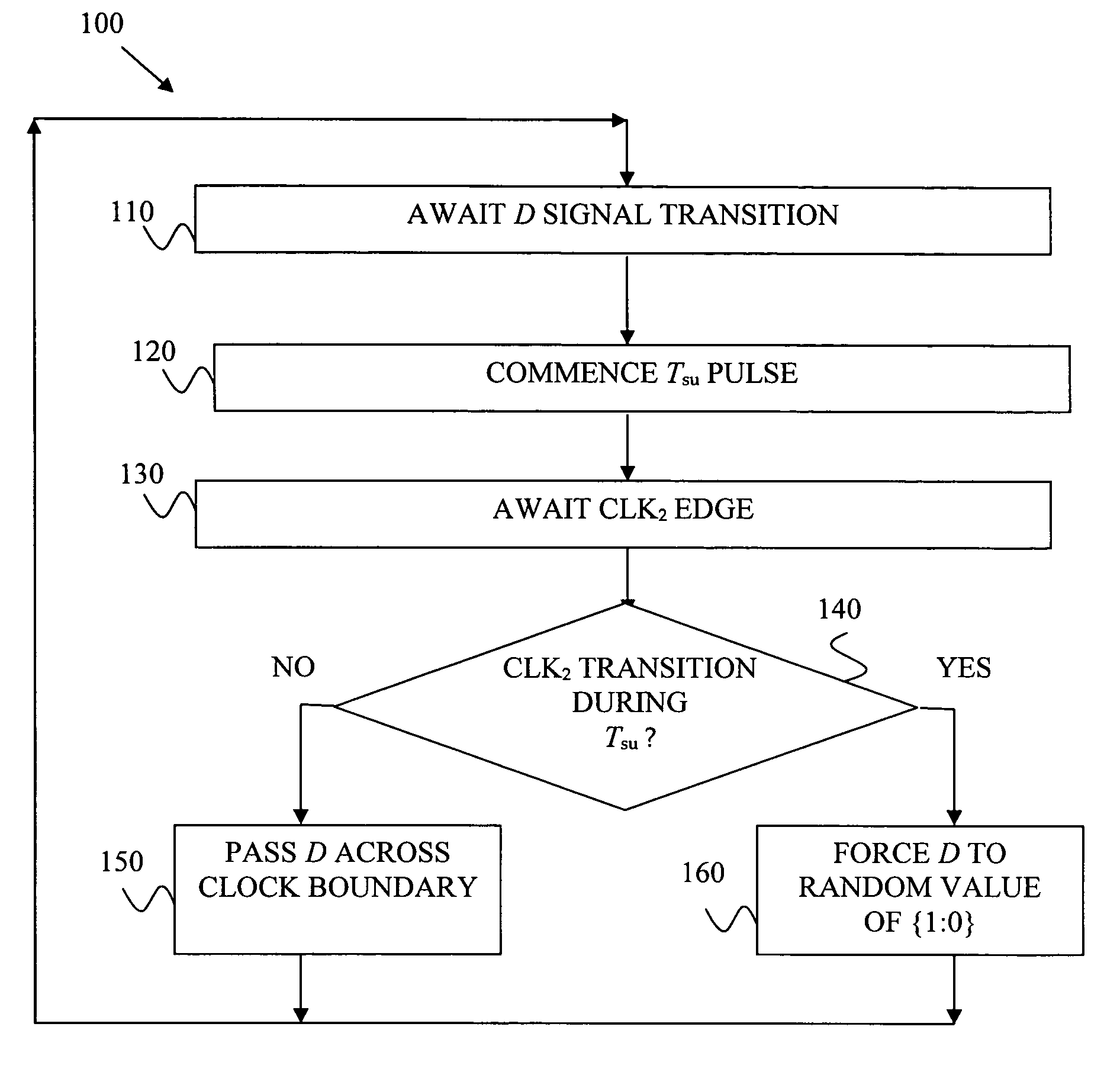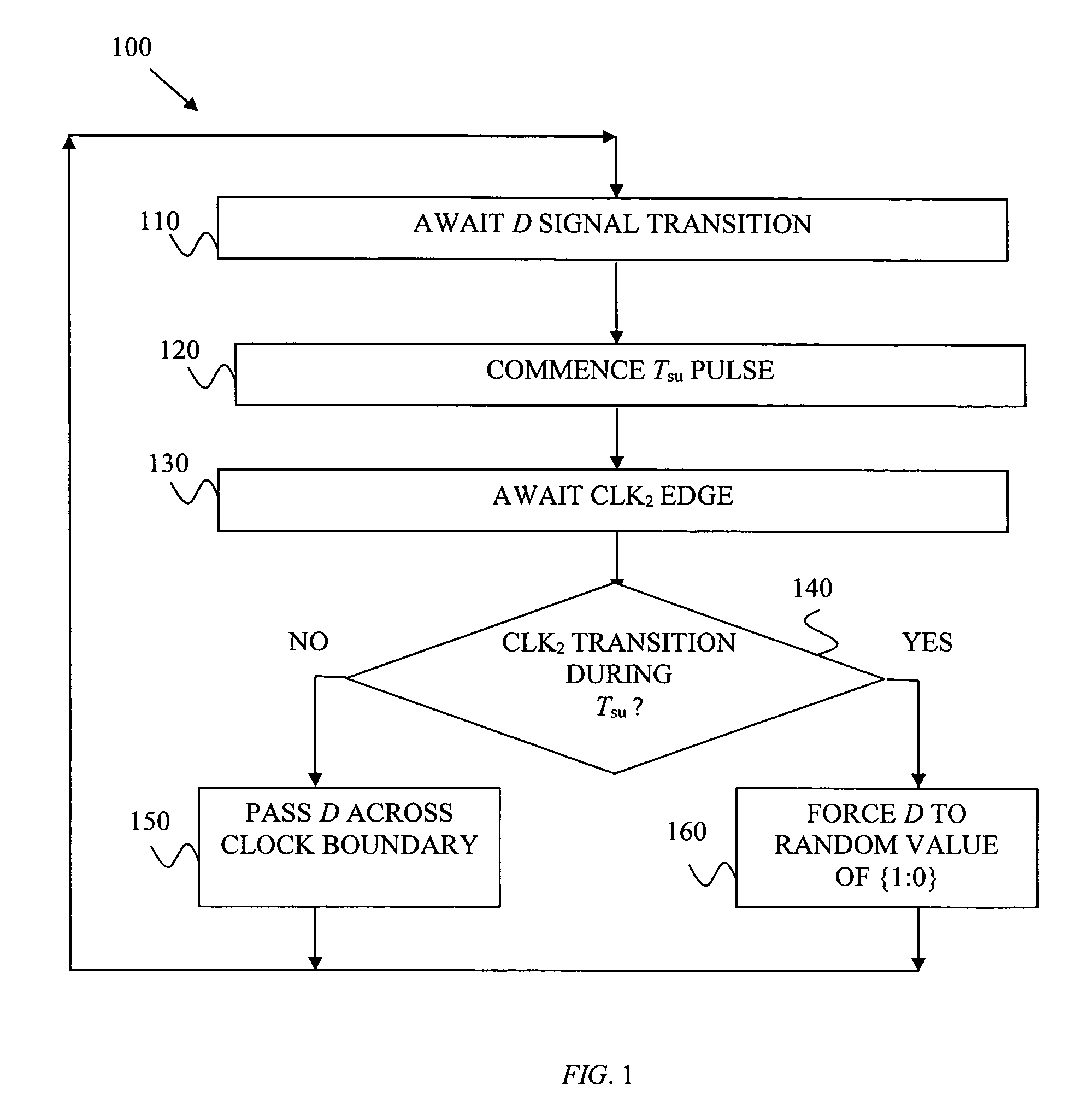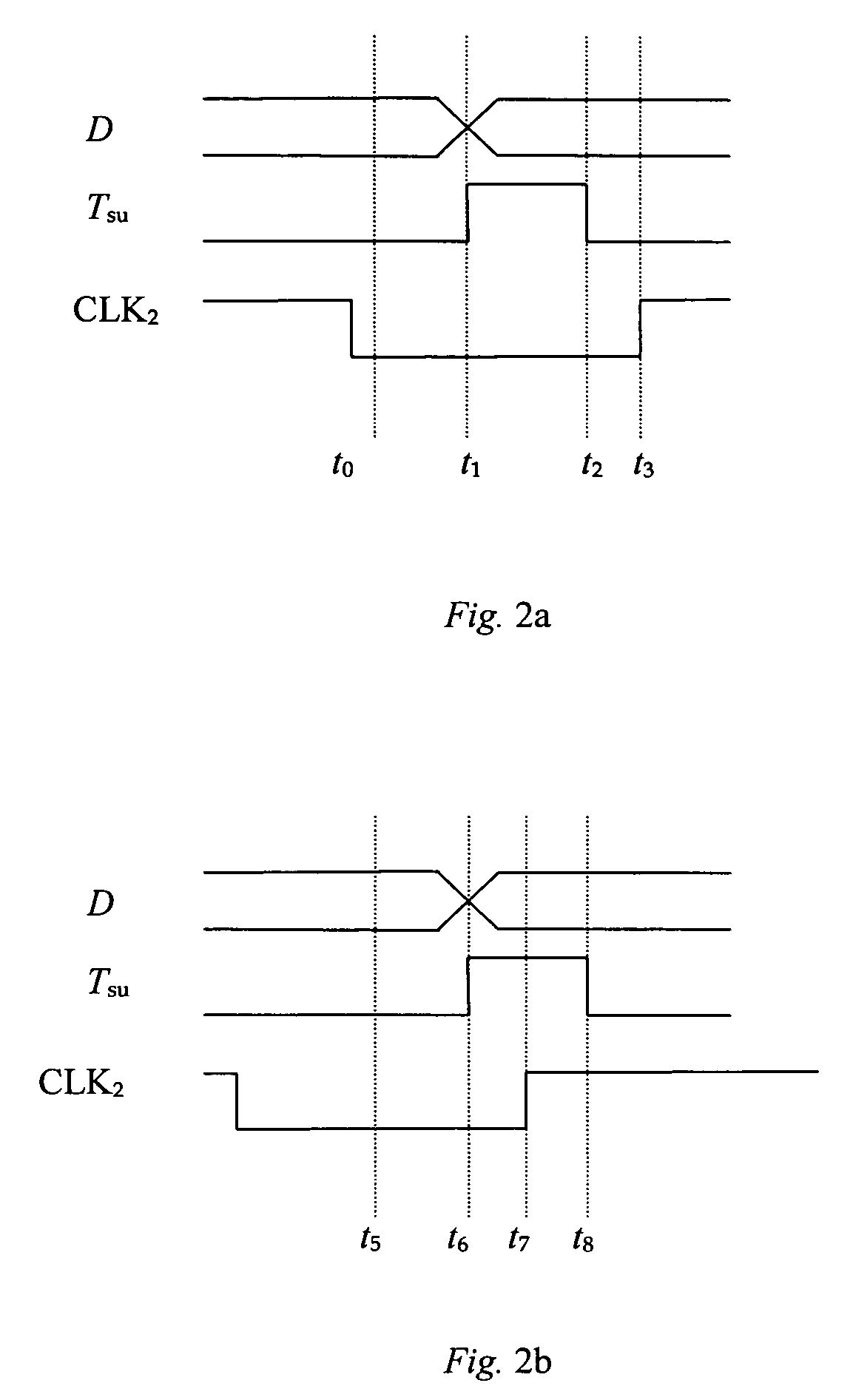Modeling metastability in circuit design
a circuit design and metastability technology, applied in the field of circuit design flow, can solve problems such as disruption or inability to operate accurately, flip-flop entering a state of unpredictable output, disruption particularly evident, etc., and achieve the effect of stable transition of d
- Summary
- Abstract
- Description
- Claims
- Application Information
AI Technical Summary
Benefits of technology
Problems solved by technology
Method used
Image
Examples
Embodiment Construction
[0017]In accordance with the preferred embodiments, various code is included in either or both of the circuit functional level (e.g., register transfer level (“RTL”) or any other language used to describe and model circuitry) or gate simulation design flow so as to improve these design flows in the context of metastability. To better appreciate these aspects, the discussion below first address the functional aspect, using RTL as a preferred example, and is then followed with the gate level aspect.
[0018]In connection with improving the RTL design flow so as to provide for improved testing with the possibility of metastability, the preferred embodiments include sufficient code so as to provide a behavioral form of potential metastability at the edge between RTL functions where a signal will cross from one clock domain to another. This code is further described below, but first various observations are noteworthy. As a first observation, note that in circuit design, often a so-called s...
PUM
 Login to View More
Login to View More Abstract
Description
Claims
Application Information
 Login to View More
Login to View More - R&D
- Intellectual Property
- Life Sciences
- Materials
- Tech Scout
- Unparalleled Data Quality
- Higher Quality Content
- 60% Fewer Hallucinations
Browse by: Latest US Patents, China's latest patents, Technical Efficacy Thesaurus, Application Domain, Technology Topic, Popular Technical Reports.
© 2025 PatSnap. All rights reserved.Legal|Privacy policy|Modern Slavery Act Transparency Statement|Sitemap|About US| Contact US: help@patsnap.com



